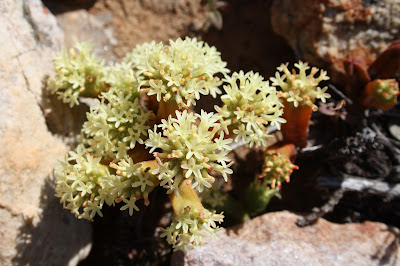Your brain never stops developing and changing. It’s been doing it from the time you were an embryo and it will keep doing so all your life. And this ability, perhaps, represents its greatest strength. (James Trefil)
In a study*, neuroscientists
found that juggling causes an increase in the nerve strands in the brain (white
matter), with which different parts of your brain communicate with each other. This
is because juggling is a complex motor skill to learn and learning results in
brain growth. Learning to ride a unicycle or to do tightrope walking would
probably have the same effect.
In this exercise, I combine juggling with reciting using two
different modes of thinking, so it is a real brain challenge. Creativity is about connecting information and combining it to come up with a new idea, so juggling is good brain exercise for creative thinking.
First, however, you
need to learn how to do basic juggling#:
Stand
outside on grass or soft sand. The first time I tried juggling I was in the
kitchen and used a couple of oranges from the fruit bowl. Well, soon I had
orange juice on the tiled floor!
First, practise throwing one ball from one hand to the other. Keep your body still as you throw the ball up and across, to about eye level, with the one hand and catch with the other. Use your hands to throw and catch, not your body, and keep your eye on the ball. Get into the rhythm of throw up and across, catch, throw up and across, catch ...
Now, take two balls (or apples or oranges) that fit comfortably in each hand and learn how to juggle with two balls. Throw one ball up straight to about eye level and across to your other hand. (Throw up and across, using your hands to throw, as you did with one ball.) While the first ball is in the air, at about eye level, throw the second ball up and across. While the second ball is in the air (as it reaches eye level), catch the first ball and throw it up and across. Get yourself into the rhythm of throw, throw, catch, throw, catch, throw …
Strictly speaking, juggling should involve at least three objects, but if you have never done juggling before, almost juggling with two balls will be effective if you do it often enough. When you can do almost juggling with two balls comfortably, you can try to juggle with three balls.
Once you can comfortable
‘juggle’ with one, two, or three balls, you can add exercises to give your brain
a good workout.
For these exercises, it is important to recite quickly and
to not co-ordinate the reciting with the juggling (so, for example, do not count
each time you throw a ball in the air or catch a ball). You are challenging your brain to process two different activities separately and at the same time.
If you drop a ball,
stop reciting and resume where you left off when both balls are in the air
again.
Try to do the exercise for half an hour and to make it a daily practice.
First,
practise using logical thinking processes as you juggle, for example:
- Count quickly to 100.
- Now count backwards from 100.
- Count even numbers and then odd numbers to 100.
- Recite the alphabet.
- Now recite the alphabet leaving out vowels.
- Recite multiplication tables.
Then,
practise using creative thinking processes as you juggle, for example:
- Recite a free association exercise (say aloud all the ideas and thoughts that you associate with the word) starting with the word table or clouds or fabric or candles.
- Say aloud all the words, terms, and ideas you associate with a concept such as happiness or unity or peace or love.
- Recite all the different you uses you can think of for a magazine or a backpack or a tennis racquet or a bucket.
* The 24 participants in the study about juggling juggled with
three balls for half an hour each day for six weeks. (Jan Scholz et al.
‘Juggling with white matter’, Nature Neuroscience, October 12, 2009)
# Here's one of many websites that teaches the basics of juggling: http://www.kalvan.net/howtojug/howtojug.htm.










+Dawn+St+Dare.jpg)
+Dawn+St+Dare.jpg)


